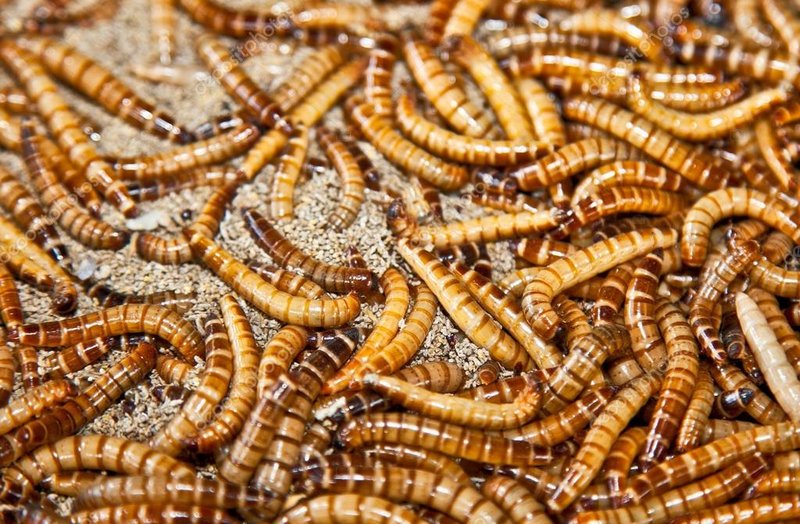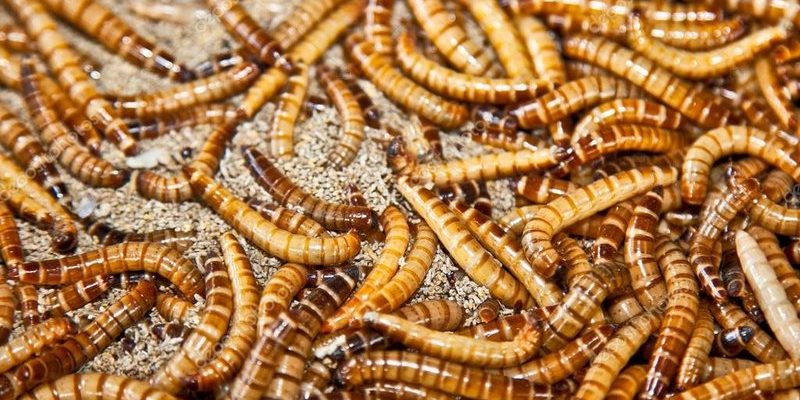
So, where do mealworms like to hang out in the wild? It’s not as simple as just saying “dirt.” Their habitat choices can vary based on several factors, including moisture, temperature, and the availability of food. Let’s dive deeper into the world of mealworms and uncover what makes their chosen environments so special.
Natural Habitats: Where They Call Home
Mealworms are actually pretty adaptable and can be found in a range of environments. You might spot them in:
- Decaying Organic Matter: Mealworms love to munch on decomposing plant material, like leaves and wood.
- Soil: They thrive in well-aerated soil rich in organic matter.
- Compost Piles: These are like all-you-can-eat buffets for mealworms, packed with nutrients.
Here’s the thing: their preference for organic waste means that you’ll often find them in gardens or even in your backyard compost. They play a vital role in breaking down organic material into nutrient-rich soil, helping plants grow faster and healthier. This makes mealworms not just survivors but key players in maintaining ecological balance.
Moisture and Temperature Preferences
One of the biggest factors influencing mealworm habitats is moisture. They enjoy environments that are neither too dry nor too wet. Ideally, they thrive in conditions with around 50% humidity. You might be wondering why moisture matters. Well, mealworms, like other insects, can dehydrate quickly. Too little moisture can lead to a lack of food sources and even make them more vulnerable to predators.
Temperature also plays a significant role in mealworm habitat preferences. They prefer warmer climates, ideally between 20°C to 30°C (68°F to 86°F). In cooler temperatures, their metabolism slows down significantly, making them less active. This means they’re not as efficient at breaking down organic material, which can affect their population dynamics.
Impact of Food Availability
When it comes to mealworms, food is king! Their diet mainly consists of decaying plant matter—think of things like rotting vegetables or fallen leaves. They really enjoy high-fiber foods, and without them, you won’t find them hanging around for long.
Here’s an interesting fact: mealworms can even survive on various grains! In places where grain is stored (like farms or barns), mealworms can thrive by feeding on spilled grain and waste. This makes them somewhat of a pest in these environments. Just like how a hungry friend at a buffet tends to keep going back for more, mealworms will stick around as long as there’s food to munch on!
Defensive Adaptations in Their Habitat
Mealworms aren’t just passive creatures. They have developed some fascinating adaptations to thrive in the wild. For instance, their dark, tough exoskeleton helps protect them from predators. But they also have a nifty trick up their sleeve—they can burrow into the soil or organic matter. This burrowing behavior keeps them safe from hungry birds or other predators.
Furthermore, mealworms have a unique way of sensing their environment. They use tiny sensory hairs on their bodies to detect changes in light, moisture, and even smells. If conditions become unfavorable, they can simply move to a different spot that better suits their needs.
Human Influence on Mealworm Habitats
With all the talk about natural habitats, let’s consider how humans impact mealworm living conditions. Urbanization, pollution, and even agricultural practices can change the availability of places where mealworms thrive. For example, widespread pesticide use in farming can reduce their food sources and affect their populations negatively.
On the flip side, mealworms can also be viewed positively in some human settings. Interest in sustainability has led to mealworms being used for composting organic waste. You might even see them in eco-friendly agriculture as a way to recycle surplus food! In this way, they help us develop more sustainable practices and reduce waste.
Understanding the habitat preferences of mealworms is essential, not just for their survival but also for their role in our ecosystems. These little larvae are indispensable recyclers, turning organic waste into nutrient-rich soil. By appreciating where they thrive, we can better support their populations and, in turn, enhance our environment.
So next time you come across a mealworm (maybe in your compost pile or while gardening), remember they’re not just a snack for birds or fish. They’re tiny warriors of decomposition doing important work for our planet! By fostering environments that support mealworms, we contribute to a healthier, more sustainable ecosystem. And honestly, it feels good to know that even the smallest creatures play a big role in taking care of our world.

